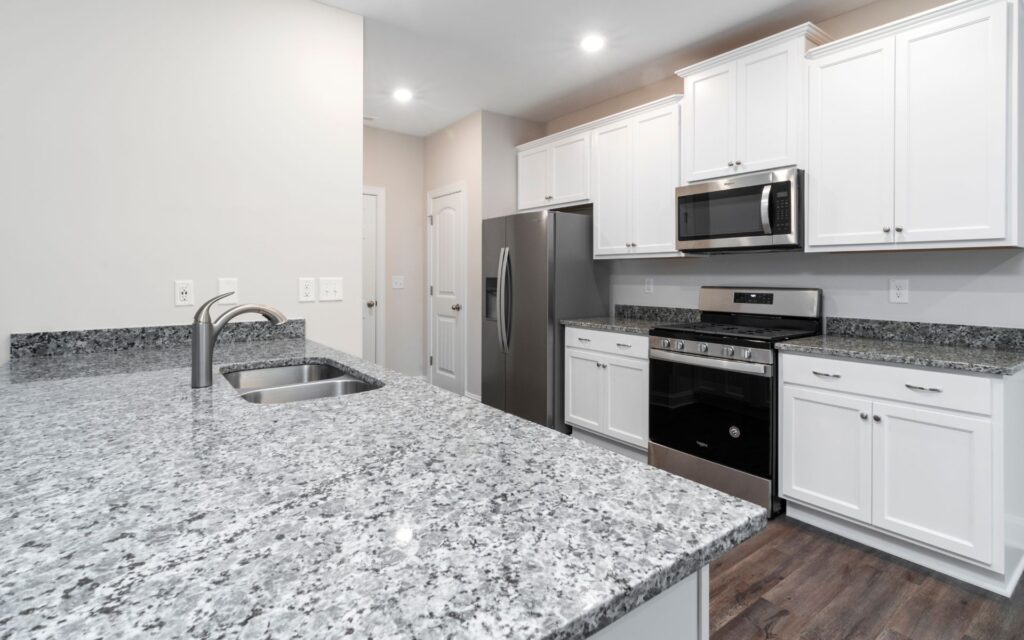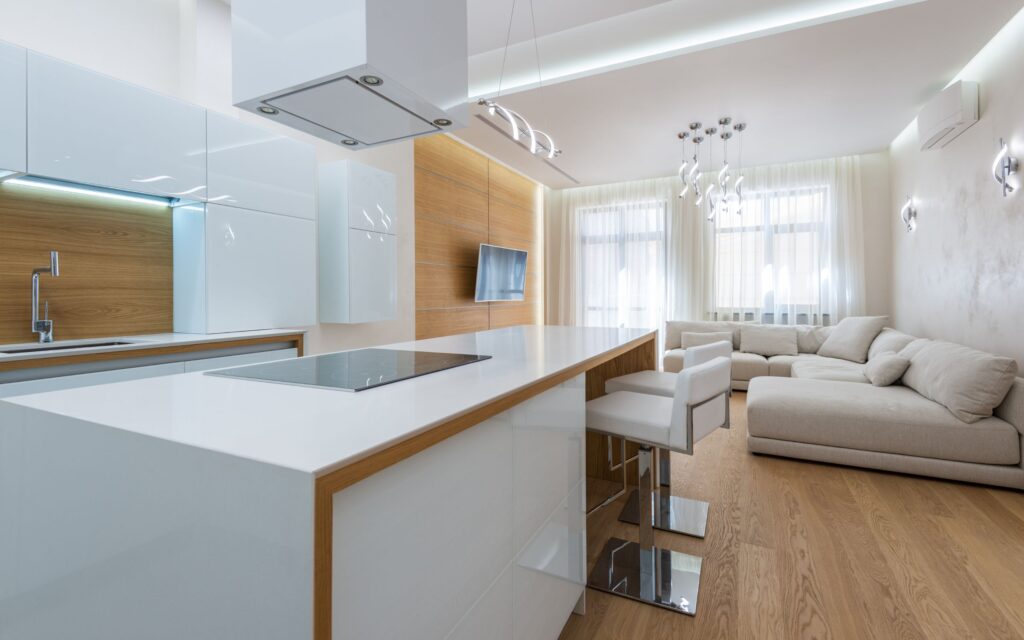Installing new granite countertops can be a big investment for your kitchen or bathroom remodel. As a homeowner, understanding how to evaluate granite quality should be your priority. With so many options, how do you ensure you choose a high-quality, granite countertop that will look beautiful and last for years to come?
In this guide, we’ll explore everything you need to know to evaluate granite quality properly. Equipped with these insights, you can confidently explore countertop stores, ensuring you select exquisite, quality levels long-lasting granite that will undoubtedly enhance your home’s aesthetic appeal.
About Granite
Granite slabs are a type of igneous rock formed from molten magma cooling slowly beneath the earth’s surface. Granite forms in large deposits which are extracted from quarries in massive blocks, and then cut into slabs or tiles for countertop use. Our factory receives granite directly from quarries across the globe in standard tile sizes or cut to order in custom slab dimensions. This allows us flexibility in fabricating your dream countertop. Granite’s durability and natural beauty make it ideal for kitchens and baths.
How to Verify Granite Countertop Quality
As a customer, you’ll want to ensure any granite countertops you purchase are of the highest grade for durability, performance better durability, and aesthetics. Below are expert tips for verifying granite quality before purchase.
1. Granite Grades Matter
Granite quality falls into different grade levels based on characteristics like rarity polish quality, aesthetics poor quality, durability, and pricing. Being familiar with these granite grade categories will help you make an informed decision when selecting slabs.
Level 1: Entry-Level Granite
Also called “builder-grade” or “commercial-grade,” this lower-grade granite is generally considered the most affordable type of granite. While durable, entry-level granite tends to have more variation in veining patterns, pitting, micro-cracks, and absorption. The coloration may also be less consistent from slab to slab.
Entry-level granite works well for low-traffic areas like bathroom vanities. But for busy kitchens, it may show wear over time. Entry-level stone slabs are readily available and offer an inexpensive way to enjoy natural stone. Just be sure to inspect them closely for any flaws.
Level 2: Mid-Grade Granite
A step above entry-level, mid-grade granite offers better consistency in patterning and fewer structural imperfections like pits or surface cracks. The coloring and pattern that is more uniform slab to slab. This very good granite is a great option for kitchens or bathrooms seeing medium usage.
Mid-grade granite is still budget-friendly but will hold up beautifully over many years with proper sealing and care. The wider variety of patterns and colors makes finding the perfect mid-grade stone easy.
Level 3: High-Grade Granite
For a luxurious, top-of-the-line product, high-grade granite is unmatched. Sourced from exclusive quarries, premium granite has a flawless polished surface and spectacular rare coloring. Patterns are dramatic with intricate patterns and no obvious imperfections.
Investing in high-grade quality along with excellent fabrication and installation, will ensure your granite countertops not only look stunning but also stand the test of time.
2. Visually Inspect the Granite
Carefully examining the granite slab you are considering is crucial. Look closely at the overall aesthetics. The color tone should be uniform across the slab without drastic variations. Subtle natural patterns are best for a clean appearance – avoid slabs with very busy or basic patterns. Check the surface carefully for any chips, scratches, small holes, or cavities that may affect durability or require repairs. Some minor natural pitting is normal but deep pores are problematic.
Also, inspect the edges for any cracks or damage. Take time to thoroughly visually inspect the granite grading the entire slab for any glaring defects visible cracks. High-quality granite should have minimal imperfections and a consistently beautiful appearance from all angles.
3. Best Granite Kitchen Countertop Thickness
Granite slabs range from 3/4 inches for walls and vertical surfaces to 1 1/4 inches for floors and kitchen countertops. 3/4 inch of granite material is prone to cracking or breaking over time. For durability, only use 1 1/4 inch or thicker slab for a horizontal kitchen or bathroom countertop.
Thicker granite also allows for more polish which enhances the surface shine. Be sure to verify the exact granite thickness and opt for thinner slabs at a 1 1/4 inch minimum. Pay attention if the edges are laminated as that indicates a thinner slab. Thicker slabs signal better quality.
4. Porosity
Granite’s porosity or absorbency varies by stone type. Less porous granite is more stain-resistant. To check granite porosity first, place a few drops of lemon juice or water on the surface. On more porous granite, it will darken and slowly absorb. On lower porosity granite, the drops bead and wipe the white stain away quickly.
Avoid granite that readily absorbs liquids, especially for kitchens. Look for granite rated a low grade on the porosity scale. The installer should know the granite’s porosity rating. Less highly porous, granite has higher quality.
5. Origin
Where in the world the granite originated also impacts its rarity and the higher quality granite. Brazilian and Indian granite is a more affordable option while Italian, Chinese, and Canadian granite is higher end.
Ask the specific quality of granite, quarry, or country where the slabs were extracted. Opt for rarer types like Italian over ubiquitous Brazilian granite which tends to be lower grade. Limited supply also means higher or lower quality granite.
Final Thoughts
Not all granite slabs and new countertops are equal when it comes to aesthetics, durability, and stain resistance. As a homeowner, knowing how to evaluate quality differences is powerful. By considering the grade, inspecting visually, verifying thickness and porosity, understanding the granite’s quality and origin, and asking the installer key questions, you can feel confident your new granite countertops will perform well for years to come.
While higher-grade granite costs more, the investment is well worth it for a premium material that will withstand heavy use and maintain its beauty over time. With these tips for checking granite quality before purchase, you can relax knowing your kitchen or bathroom remodel includes one of nature’s finest natural stones.




